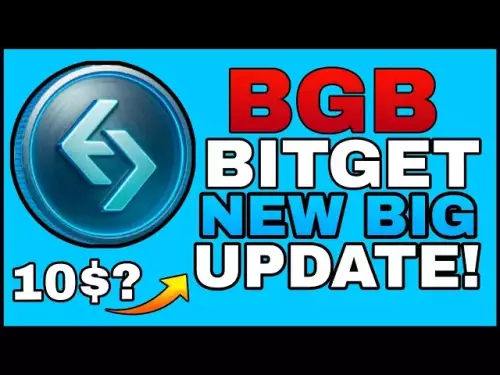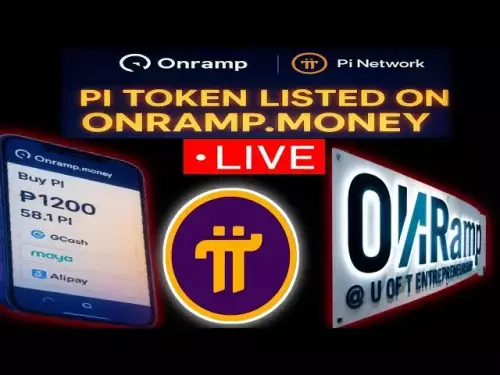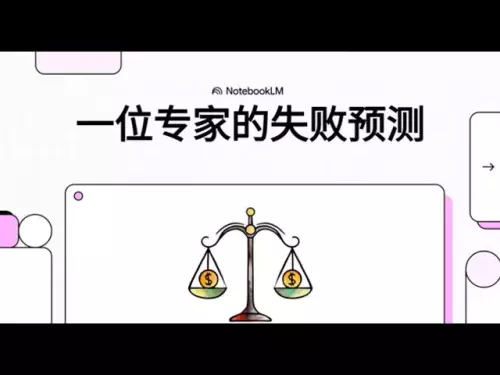-
 Bitcoin
Bitcoin $111100
2.75% -
 Ethereum
Ethereum $4318
0.85% -
 XRP
XRP $2.842
4.23% -
 Tether USDt
Tether USDt $0.0000
0.00% -
 BNB
BNB $851.2
0.83% -
 Solana
Solana $207.3
6.33% -
 USDC
USDC $0.9999
0.00% -
 Dogecoin
Dogecoin $0.2144
3.58% -
 TRON
TRON $0.3379
0.74% -
 Cardano
Cardano $0.8298
4.78% -
 Chainlink
Chainlink $23.44
5.17% -
 Hyperliquid
Hyperliquid $44.65
4.39% -
 Ethena USDe
Ethena USDe $1.001
0.01% -
 Sui
Sui $3.309
5.33% -
 Bitcoin Cash
Bitcoin Cash $582.4
8.34% -
 Stellar
Stellar $0.3649
4.10% -
 Avalanche
Avalanche $24.26
5.93% -
 Hedera
Hedera $0.2190
2.59% -
 UNUS SED LEO
UNUS SED LEO $9.567
-0.06% -
 Cronos
Cronos $0.2609
-0.15% -
 Litecoin
Litecoin $111.5
3.95% -
 Toncoin
Toncoin $3.170
2.30% -
 Shiba Inu
Shiba Inu $0.00001241
3.84% -
 Polkadot
Polkadot $3.799
4.00% -
 Uniswap
Uniswap $9.558
3.77% -
 Bitget Token
Bitget Token $5.090
9.98% -
 World Liberty Financial
World Liberty Financial $0.2299
4.16% -
 Dai
Dai $0.9999
-0.01% -
 Monero
Monero $268.1
3.56% -
 Aave
Aave $316.5
4.97%
What is a whitelist in crypto (for NFTs or sales)?
A crypto whitelist grants early access to NFTs or tokens for loyal supporters, offering perks like lower fees and exclusive minting rights.
Sep 02, 2025 at 09:18 pm
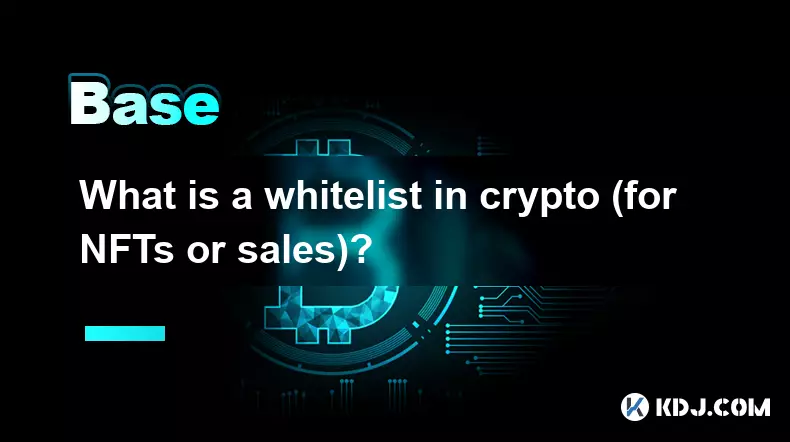
Understanding the Concept of a Whitelist in Crypto
1. A whitelist in the cryptocurrency space refers to a list of approved participants who gain early or exclusive access to certain offerings such as NFT minting events or token sales. Being on a whitelist often means bypassing public waitlists and securing opportunities before general availability. This system is widely used to reward community engagement and ensure fair distribution.
2. Projects utilize whitelists to build stronger relationships with their core supporters. Early adopters, active community members, or those who complete specific tasks may be granted whitelist spots. These tasks can include social media engagement, referrals, or holding particular tokens. The process helps filter out passive observers and incentivizes meaningful participation.
3. Whitelists are commonly implemented during NFT drops. Artists or development teams release limited collections and use whitelisting to control mint volume and prevent bot-driven scalping. This approach increases fairness and reduces congestion during launch phases, allowing genuine fans to participate without competing against automated systems.
4. The technical execution of a whitelist usually involves registering wallet addresses in a smart contract. Once verified, these addresses can mint or purchase during a designated pre-sale window. After the whitelist phase concludes, remaining tokens or NFTs may be opened to the public, often at higher prices or under different conditions.
5. Transparency and trust are critical when managing a whitelist. Projects must clearly communicate selection criteria and timelines. Mismanagement or perceived favoritism can damage credibility and lead to community backlash. Successful whitelists foster loyalty and set the tone for long-term project sustainability.
Benefits of Being on a Crypto Whitelist
1. Participants on a whitelist typically enjoy reduced minting fees or guaranteed allocation, which can result in immediate value upon resale. This advantage is especially significant during high-demand launches where secondary market prices surge shortly after release.
2. Early access allows whitelist members to choose preferred NFTs from a collection before the general public. In projects with rarity-based attributes, securing a high-value item during pre-sale increases potential profit and bragging rights within the community.
3. Being whitelisted enhances credibility and visibility. Active contributors recognized through whitelist inclusion often gain influence and networking opportunities within the ecosystem. This recognition can lead to future collaborations or invitations to exclusive events.
4. Some projects offer additional perks beyond minting rights, such as airdrops, governance tokens, or membership in private forums. These extended benefits deepen user engagement and align incentives between the team and supporters.
5. Whitelist participation demonstrates commitment, which can be tracked on-chain. This history may qualify users for future whitelist opportunities across different projects, creating a compounding advantage for consistent contributors.
Risks and Challenges Associated with Whitelists
1. Scams frequently exploit the popularity of whitelists. Fraudulent projects may promise whitelist spots in exchange for cryptocurrency or personal information. Users must verify official channels and avoid sharing private keys or signing unknown transactions.
2. Overcrowded whitelists can diminish perceived value. When too many participants gain access, the exclusivity and financial upside decrease. Some projects fail to deliver post-launch, leaving whitelist holders with illiquid or depreciating assets.
3. Gas wars can still occur during whitelist minting, especially if demand exceeds supply. Even with pre-approval, users may face high Ethereum network fees or transaction failures due to congestion, undermining the intended advantage.
4. Projects may change whitelist terms last minute, such as reducing allocation per wallet or extending deadlines. These shifts can frustrate participants and create confusion, particularly if communication is inconsistent or delayed.
5. Holding a whitelist spot does not guarantee profit. Market conditions, project execution, and community sentiment heavily influence post-mint performance. Speculative gains are never assured, and losses are possible even with early access.
How Projects Manage Whitelist Selection
1. Many teams use gamified systems to determine eligibility, rewarding actions like retweeting announcements, joining Discord servers, or referring new members. These activities generate buzz and expand outreach while filtering for engaged users.
2. Token or NFT holdings in specific wallets can automatically qualify users for whitelists. This method favors long-term supporters and aligns incentives with existing ecosystem participants.
3. Some projects implement lottery-based selection from a pool of applicants. This approach promotes fairness and prevents dominance by users with excessive resources or automation tools.
4. Manual curation is used in niche or high-profile launches, where teams personally review contributions and community impact. While time-consuming, this method ensures quality and alignment with project values.
5. Transparent on-chain verification allows users to confirm their status independently. Projects publishing signed messages or Merkle tree proofs enhance trust and reduce reliance on centralized announcements.
Frequently Asked Questions
What does it mean if my wallet is whitelisted?It means your wallet address has been pre-approved to participate in a private sale or minting event. You can usually mint or purchase before the public launch, often under preferential terms.
Can I sell my whitelist spot?While some users attempt to trade whitelist access, most legitimate projects prohibit this. Transferring access may void eligibility, and unofficial sales carry high scam risks. Always check the project’s official rules.
How do I know if a whitelist is legitimate?Verify through official project websites, verified social media accounts, and community forums. Never send funds or sign transactions unless you are certain of the source. Look for on-chain proof and transparent selection criteria.
Do all NFT projects use whitelists?No, not all projects implement whitelists. Some opt for open mints, Dutch auctions, or allowlist-free releases. The choice depends on the team’s strategy for distribution, community building, and scalability.
Disclaimer:info@kdj.com
The information provided is not trading advice. kdj.com does not assume any responsibility for any investments made based on the information provided in this article. Cryptocurrencies are highly volatile and it is highly recommended that you invest with caution after thorough research!
If you believe that the content used on this website infringes your copyright, please contact us immediately (info@kdj.com) and we will delete it promptly.
- Stablecoin Showdown: South Korea's Institutional Crypto Race
- 2025-09-03 02:45:12
- Bitcoin Price Prediction, Pepeto Buy: Navigating the Crypto Hype
- 2025-09-03 02:45:12
- PTB Tokenomics: Redefining DeFi Adoption and Value Capture
- 2025-09-03 03:05:12
- AI, XRP, and Predictions: Decoding the Crypto Crystal Ball
- 2025-09-03 03:05:12
- Stablecoins, Yield-Generating, and Reflect: A New Era of DeFi?
- 2025-09-03 03:45:16
- BNB, Cardano, and MAGACOIN FINANCE: What's Hot in Q4 2025?
- 2025-09-03 04:05:16
Related knowledge

What is a "crypto trading bot" and do they work?
Sep 02,2025 at 04:19pm
Understanding Crypto Trading Bots1. A crypto trading bot is a software application designed to automate the process of buying and selling cryptocurren...

What is a "copy trading" platform?
Sep 02,2025 at 07:00pm
Understanding Copy Trading in the Cryptocurrency Space1. A copy trading platform allows users to automatically replicate the trades of experienced inv...
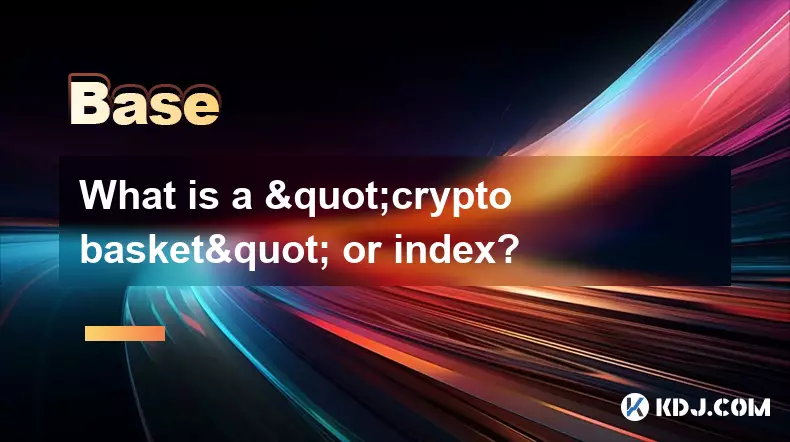
What is a "crypto basket" or index?
Sep 03,2025 at 07:01am
Understanding Crypto Baskets and Their Role in Digital Asset Investment1. A crypto basket refers to a curated collection of multiple cryptocurrencies ...
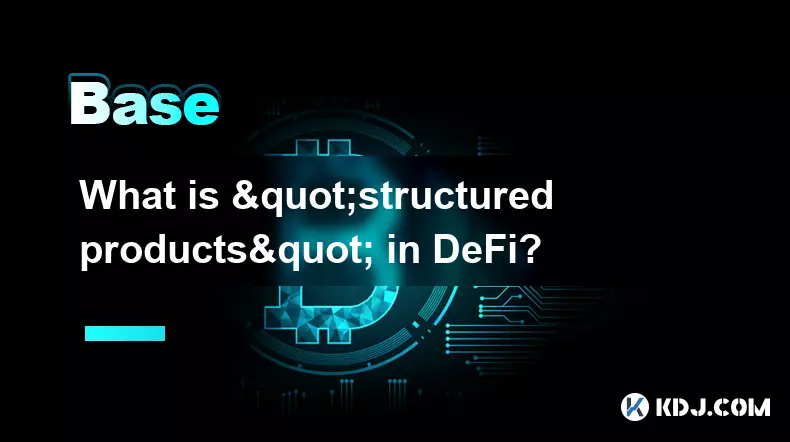
What is "structured products" in DeFi?
Sep 02,2025 at 11:01pm
Understanding Structured Products in DeFi1. In decentralized finance (DeFi), structured products refer to customized financial instruments that combin...

What is "formal verification" for smart contracts?
Sep 03,2025 at 03:00am
Bitcoin's Role in Decentralized Finance1. Bitcoin remains the cornerstone of decentralized finance, providing a trustless and immutable ledger for pee...
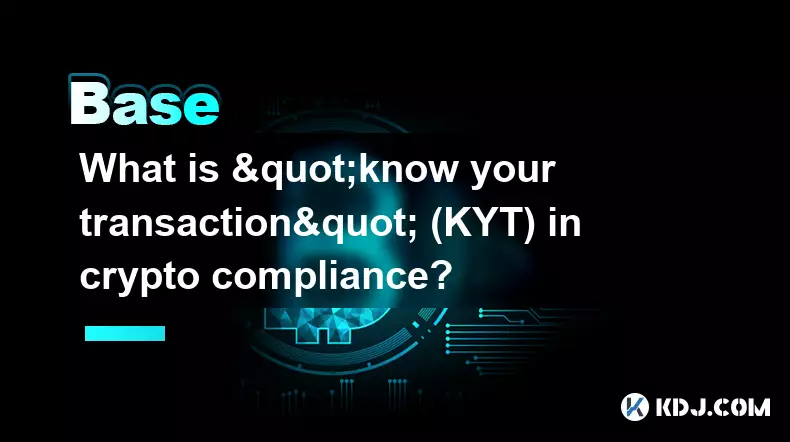
What is "know your transaction" (KYT) in crypto compliance?
Sep 02,2025 at 11:36pm
Decentralized Finance and Its Role in the Crypto Ecosystem1. Decentralized finance, commonly known as DeFi, has restructured how financial services op...

What is a "crypto trading bot" and do they work?
Sep 02,2025 at 04:19pm
Understanding Crypto Trading Bots1. A crypto trading bot is a software application designed to automate the process of buying and selling cryptocurren...

What is a "copy trading" platform?
Sep 02,2025 at 07:00pm
Understanding Copy Trading in the Cryptocurrency Space1. A copy trading platform allows users to automatically replicate the trades of experienced inv...

What is a "crypto basket" or index?
Sep 03,2025 at 07:01am
Understanding Crypto Baskets and Their Role in Digital Asset Investment1. A crypto basket refers to a curated collection of multiple cryptocurrencies ...

What is "structured products" in DeFi?
Sep 02,2025 at 11:01pm
Understanding Structured Products in DeFi1. In decentralized finance (DeFi), structured products refer to customized financial instruments that combin...

What is "formal verification" for smart contracts?
Sep 03,2025 at 03:00am
Bitcoin's Role in Decentralized Finance1. Bitcoin remains the cornerstone of decentralized finance, providing a trustless and immutable ledger for pee...

What is "know your transaction" (KYT) in crypto compliance?
Sep 02,2025 at 11:36pm
Decentralized Finance and Its Role in the Crypto Ecosystem1. Decentralized finance, commonly known as DeFi, has restructured how financial services op...
See all articles





















![[Pycoin] PI Coin -Start introduction of practical use (emergency)?! Now .. 'Here' first you can use it first / How to accelerate mining #paikoin [Pycoin] PI Coin -Start introduction of practical use (emergency)?! Now .. 'Here' first you can use it first / How to accelerate mining #paikoin](/uploads/2025/09/02/cryptocurrencies-news/videos/pycoin-pi-coin-start-introduction-practical-emergency-accelerate-mining-paikoin/68b6ea848f2d1_image_500_375.webp)

